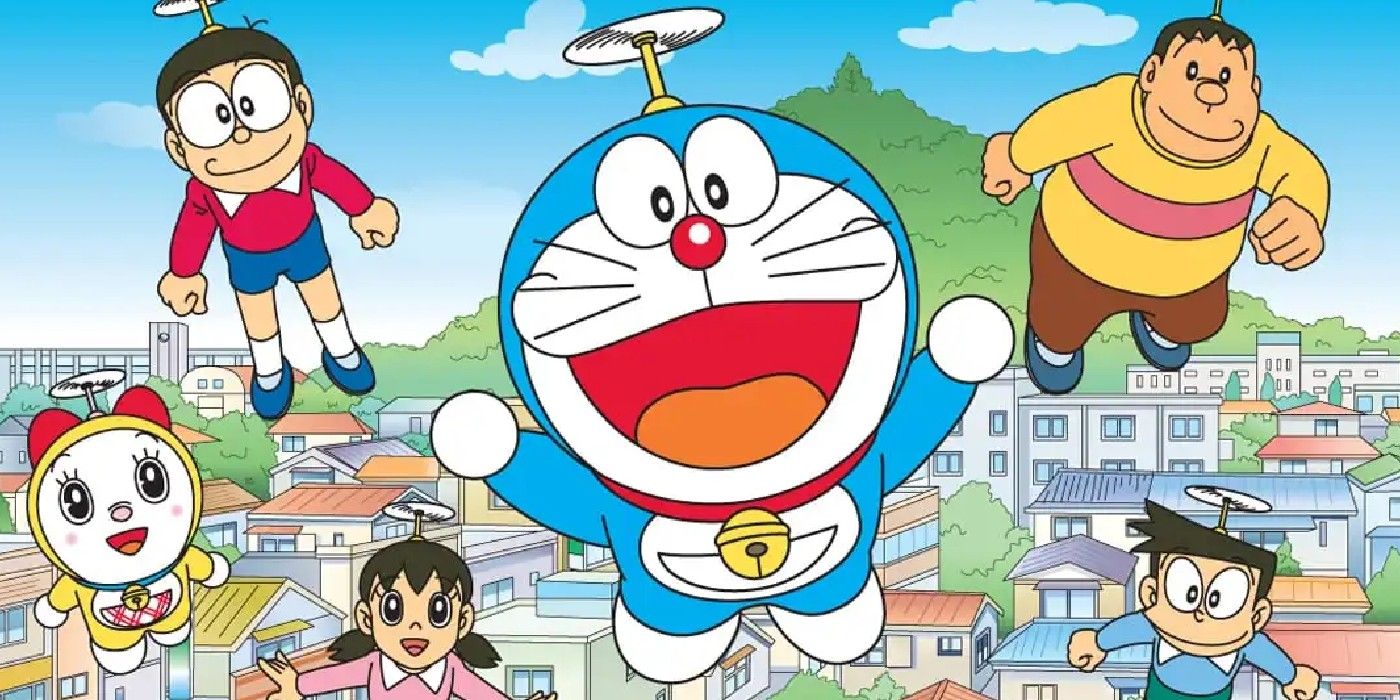In the past few years, anime has become more popular than ever, with the medium taking the world and the West in particular by storm. This isn’t the first era where anime has become ubiquitous outside of Japan, however, with anime being just as big in several other Asian countries. One of these is Indonesia, where a time-traveling cat has come to define anime and animation as a whole.
Doraemon is a series that’s instantly recognizable in Japan as well as Indonesia thanks to the former using the lovable character and his pals as an artistic form of soft economic power. Since then, Doraemon has been beloved by generations of Indonesians, with his films even outgrossing some of today’s biggest anime titans. Here’s how Doraemon came to represent all of anime in the land of Nusantara.
Beginning in the 1980s, the Japanese Ministry of Foreign Affairs began its attempts to change the face of Japan to the world at large, hoping to use its media and commercial products in a way that recreated the country’s image. Still recovering in some ways from World War II, Japan needed a means of changing its negative image to become a viable entity on the world stage. Said job was made easier in countries such as Indonesia, which Japan did not oppose or invade during WW2. Its methods of media diplomacy to Indonesia and other countries included exporting the likes of candy, toys and eventually, anime, with one of these being the kid-friendly Doraemon.
With its easily palatable nature making it a sort of Japanese equivalent to Disney’s Mickey Mouse, the 1970s version of the show, which was released in Indonesia in the ’80s, became a hit among an entire generation of children. This continued throughout the 2000s, even with anime as a whole losing popularity in the country. This stemmed from increasing animated competition, as well as an eventual crackdown on anime due to perceived negative content.
Even throughout these changes, Doraemon has consistently remained a part of Indonesian television and culture, with the show and its cast being some of the most recognizable anime characters of all time. Many parents recognize the series from their youth, and with the more recent versions of the series airing on Indonesian TV, it will likely stay that way even amid growing competition. Said competition includes Japanese idol culture and musical competitions being exported to Indonesia, but even with eyes on other programming, Doraemon remains the most identifiable Japanese cultural export for many Indonesians.
Doraemon Is More Popular Than Demon Slayer and One Piece in Indonesia
As pointed out by Twitter user iyom, the two Stand By Me Doraemon films made more money in Indonesia than any other anime movies. These other films include entries from hugely popular franchises such as One Piece, Jujutsu Kaisen and Demon Slayer, which is likely shocking to many modern anime fans. After all, these three franchises are currently the biggest names in anime, with others such as Dragon Ball Super and Naruto being no slouches, either. Despite that, it’s the kid-friendly Doraemon that continually beats them all in Indonesia, both at the box office and in terms of general popularity.
There doesn’t seem to be a particular cultural reason for why the series is so well-liked in Indonesia, but it seems to be due to Doraemon being the only consistently aired anime on Indonesian television. It features themes and concepts that are appropriate for kids, including basic things like courage, the power of friendship and other familiar topics. This might seem generic, but it also makes the show much easier to enjoy with the whole family when compared to a darker or more violent anime such as Jujutsu Kaisen. To be fair, it’s received changes and censorship of its own when brought to Indonesia, with imagery such as characters in bikinis being blurred out. Nevertheless, so many kids have grown up with Doraemon throughout the past several decades that it’s as synonymous with anime and cartoons as Disney is with animation in the West.
This familiarity and cultural seal of approval easily explains how Doraemon of all characters is able to fend off the likes of Luffy and other seemingly “cooler” characters. The blue cat maintaining this sort of anime ambassador role will likely continue, as his is one of the few anime shows being broadcast on everyday Indonesian channels. It’s an excellent example of how saturating a market with a product can help turn it into an irreplaceable cultural cornerstone, even when said cornerstone is actually made in Japan.
